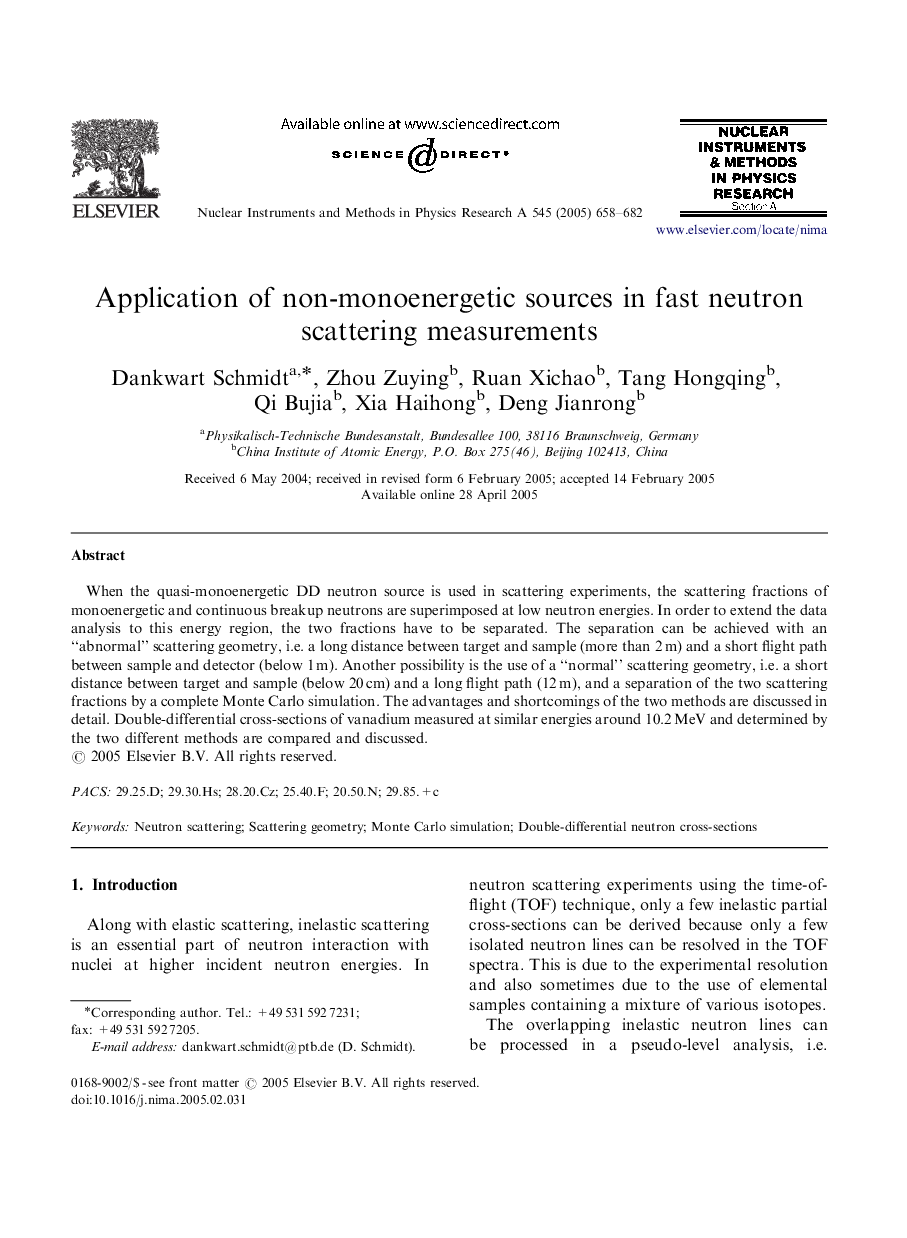| Article ID | Journal | Published Year | Pages | File Type |
|---|---|---|---|---|
| 10716548 | Nuclear Instruments and Methods in Physics Research Section A: Accelerators, Spectrometers, Detectors and Associated Equipment | 2005 | 25 Pages |
Abstract
When the quasi-monoenergetic DD neutron source is used in scattering experiments, the scattering fractions of monoenergetic and continuous breakup neutrons are superimposed at low neutron energies. In order to extend the data analysis to this energy region, the two fractions have to be separated. The separation can be achieved with an “abnormal” scattering geometry, i.e. a long distance between target and sample (more than 2Â m) and a short flight path between sample and detector (below 1Â m). Another possibility is the use of a “normal” scattering geometry, i.e. a short distance between target and sample (below 20Â cm) and a long flight path (12Â m), and a separation of the two scattering fractions by a complete Monte Carlo simulation. The advantages and shortcomings of the two methods are discussed in detail. Double-differential cross-sections of vanadium measured at similar energies around 10.2Â MeV and determined by the two different methods are compared and discussed.
Related Topics
Physical Sciences and Engineering
Physics and Astronomy
Instrumentation
Authors
Dankwart Schmidt, Zhou Zuying, Ruan Xichao, Tang Hongqing, Qi Bujia, Xia Haihong, Deng Jianrong,
